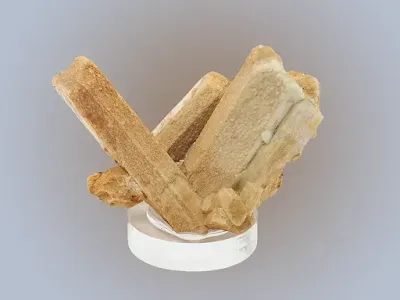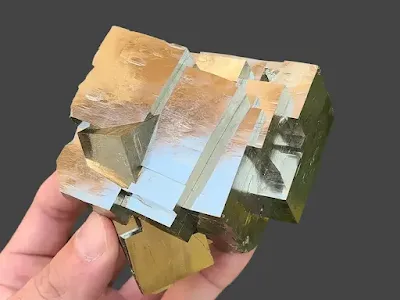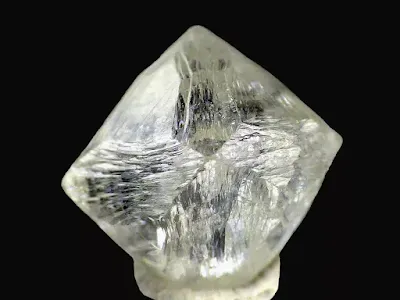Minerals Examples with Photos
Minerals are essential components of the Earth, fundamental to many natural processes and used widely in everyday life. These naturally occurring substances are the basic building blocks of rocks and are crucial for various industries, from construction to electronics.
What Are Minerals?
Minerals are naturally occurring, inorganic solids substance that have a definite chemical composition and a specific crystalline structure. They form through various geological processes, and each mineral has a unique arrangement of atoms, which gives it distinct physical properties, such as color, hardness, and crystal form. Minerals are usually identified by their distinct physical properties, such as hardness, color, luster, and density.
Key Characteristics of Minerals
Naturally Occurring: Minerals form through natural geological processes, not from human activity.
Inorganic: They are generally not formed from living organisms.
Solid State: Minerals are solid at room temperature, with atoms arranged in an orderly pattern.
Specific Chemical Composition: Each mineral has a consistent chemical formula (e.g., NaCl for halite, SiO₂ for quartz).
Crystalline Structure: Minerals have a repeating atomic arrangement, creating crystals.
Examples of Minerals
Minerals vary widely in their physical and chemical properties. Here are some of the most commonly found and used minerals:
Quartz
Quartz (SiO₂): One of the most ubiquitous minerals on Earth, quartz is composed of silicon dioxide. It exhibits a wide range of crystal morphologies and colors, including colorless crystals, amethyst (violet), citrine (yellow), and rose quartz (pink). The crystal structure of quartz is trigonal, characterized by a helical arrangement of SiO₄ tetrahedral units.
Quartz is found in a variety of geological settings, including igneous, metamorphic, and sedimentary rocks. It is a major component of granite, sandstone, and conglomerate. Due to its durability and resistance to weathering, quartz is often found in sand and gravel deposits.
Quartz has a wide variety of industrial applications. It is used in the production of glass, ceramics, and concrete. Quartz sand is used in sandblasting, filtration, and foundry applications. High-purity quartz is used in the production of semiconductor wafers for the electronics industry. Piezoelectric quartz is used in electronics applications such as oscillators, filters, and transducers.
Quartz's key properties:
- Chemical formula: SiO₂ (silicon dioxide)
- Crystal system: Trigonal
- Color: Colorless, white, gray, pink, purple, brown, or even black (depending on impurities)
- Luster: Vitreous (glassy)
- Hardness: 7 (Mohs scale)
- Cleavage: None (fractures unevenly)
- Density: 2.65 g/cm³
 |
| Quartz crystals |
Feldspar
Feldspar (KAlSi₃O₈ - NaAlSi₃O₈ - CaAl₂Si₂O₈): Feldspar represents a group of tectosilicate minerals encompassing a significant portion of the Earth's crustal composition. Feldspars exhibit various colors based on their specific chemical composition. They are incredibly common, constituting an estimated 60% of the Earth's crust and 41% of the Earth's continental crust by weight.
Here are the two main subgroups of feldspar:
- Alkali Feldspars: These feldspars contain potassium (K) and/or sodium (Na) as the dominant cations. Common alkali feldspars include orthoclase, microcline, and sanidine. Alkali feldspars tend to be light-colored, with colors ranging from white to pink or red.
- Plagioclase Feldspars: These feldspars contain calcium (Ca) as a major cation, along with varying amounts of sodium (Na). The plagioclase feldspar series is a continuous solid solution series, meaning the composition can vary continuously between a sodium end-member (albite) and a calcium end-member (anorthite). Plagioclase feldspars typically exhibit a white, gray, or greenish color.
Feldspar is found in a variety of geological settings, including igneous rocks (granite, diorite, syenite, gabbro, basalt), metamorphic rocks (gneiss, schist), and sedimentary rocks (sandstone, arkose).
Feldspar has a wide variety of industrial applications due to its abundance, unique ability to decompose and form glassy materials upon heating, and its role as a source of aluminum and alkali metals.
Feldspars's key properties:
- Crystal system: Triclinic, monoclinic
- Color: White, yellow, pink, red, gray, or green (depending on impurities)
- Luster: Vitreous (glassy)
- Hardness: 6-6.5 (Mohs scale)
- Cleavage: Perfect in two directions at nearly right angles
- Density: 2.6-2.8 g/cm³
 |
| Feldspar mineral from Congo |
Calcite
Calcite (CaCO₃): This carbonate mineral is a major constituent of limestone and marble rocks. Calcite exhibits trigonal crystal symmetry and a hardness of 3 on the Mohs scale, signifying its relative softness. Its solubility in slightly acidic water contributes to the formation of caves and other karst landforms. Calcite has significant industrial applications in the production of cement, lime, and construction materials.
Calcite is found in a wide variety of geological environments, including sedimentary, metamorphic, and igneous rocks. It is also a common component of caves and speleothems (cave formations such as stalactites and stalagmites).
Calcite is the primary constituent of limestone and marble. Limestone, a major sedimentary rock, forms from the accumulation of calcite-rich marine sediments. Marble, a metamorphic rock, originates from the transformation of limestone under high pressure and temperature.
Calcite's key properties:
- Crystal system: Trigonal
- Color: Colorless or white, but it can also be colored due to impurities. Common colors include yellow, red, orange, blue, green, and brown.
- Luster: Vitreous, subvitreous, resinous, waxy, pearly
- Hardness: 3 (Mohs scale)
- Cleavage: Perfect rhombohedral cleavage in three directions
- Specific gravity: 2.71
 |
| Dogtooth Calcite, Tounfit, Midelt, Morocco |
Pyrite
Pyrite (FeS₂): Commonly known as fool's gold due to its superficial resemblance to the precious metal, pyrite is a sulfide mineral with an isometric crystal structure. Its characteristic brassy yellow color and high metallic luster aid in identification. Pyrite is a relatively hard mineral (Mohs hardness 6-6.5) and plays a significant role in the geochemical sulfur cycle. Economically, pyrite serves as a source of sulfur and iron for various industrial processes.
Pyrite is found in a wide variety of geological environments, including sedimentary rocks, metamorphic rocks, and igneous rocks. It can also be found in hydrothermal veins and coal deposits.
Pyrite is not a valuable source of iron due to the difficulty of extracting the metal from the sulfur. However, it has been used in the past for the production of sulfuric acid and as a source of sulfur. Today, pyrite is mostly used as a gemstone, although it is not as hard or valuable as some other gemstones.
Pyrite's key properties:
- Crystal system: Cubic (Isometric)
- Color: Yellow, golden-yellow, brassy-yellow
- Luster: Metallic
- Hardness: 6 – 6.5 (Mohs scale)
- Streak: Greenish-black
- Cleavage: None, but fractures unevenly
 |
| pyrite crystals |
Halite
Halite (NaCl): This halide mineral, more commonly known as table salt, is essential for human health and biological processes. Halite possesses a cubic crystal structure and a hardness of 2.5 on the Mohs scale, indicating its softness. Its high solubility in water allows for its widespread distribution in marine environments and sedimentary basins. Halite is extensively mined as a source of sodium and chlorine for various industrial applications, including the production of chemicals and food additives.
Halite is primarily formed through the evaporation of saline waters in partially enclosed basins. These basins can be ancient seas, lakes, or inland bodies of water. As the water evaporates, the concentration of dissolved salts increases until they eventually reach saturation and precipitate out of the solution, forming halite deposits.
Halite's key properties:
- Crystal system: Cubic (Isometric)
- Color: Colorless or white in its purest form. However, impurities or structural anomalies can introduce various colors, including pink, orange, red, yellow, or gray.
- Luster: Vitreous (glassy)
- Hardness: 2.5 (Mohs scale) - This makes it relatively soft and can be easily scratched with a fingernail.
- Cleavage: Perfect cubic cleavage in three directions - Halite crystals will break cleanly along these planes.
 |
| Halite from Rudna Mine, Polkowice, Poland |
Diamond
Diamond is a pure carbon mineral (C). It is the hardest mineral on Earth and has a brilliant luster. Diamonds are used as gemstones and in industrial applications such as cutting tools and abrasives.
Diamonds are the hardest natural substance known on Earth. This means they can scratch any other mineral and can only be cut or polished with another diamond or certain abrasives. Their hardness makes them ideal for industrial applications such as cutting tools, grinding wheels, and drill bits.
Diamonds are also prized for their beauty as gemstones. When cut and polished, they exhibit a dazzling display of light and color known as fire. This fire is caused by the way light interacts with the facets of the diamond, which are the flat surfaces that are created when a diamond is cut. The brilliance of a diamond is another important factor in its quality. Brilliance refers to the amount of light that is reflected back from the diamond to the observer's eye.
Diamond's key properties:
- Crystal system: Cubic (Isometric)
- Hardness: 10 (Mohs scale) - Hardest natural substance on Earth
- Cleavage: None (perfect cleavage in four directions)
- Color: Colorless, yellow, brown, black, blue, pink, green, and other colors (depending on impurities)
- Composition: Pure carbon (chemical formula C)
- Luster: Adamantine (brilliant) - Exhibits dazzling light and color display
 |
| Diamond crystal from finsch Mine in the Lime Acres, South Africa |
Fluorite
Fluorite, also called fluorspar, is the mineral form of calcium fluoride, CaF₂. It is a beautiful and colorful mineral that is found all over the world. Fluorite is a halide mineral, which means that it is a compound of a halogen (in this case, fluorine) and a metal (in this case, calcium).
Fluorite comes in a wide variety of colors, including green, blue, purple, yellow, and even black. The color of fluorite is often caused by impurities in the mineral. For example, green fluorite is often colored by inclusions of erbium, and blue fluorite is often colored by inclusions of samarium.
Fluorite has a number of industrial uses, including as a flux in the production of steel and aluminum, and in the production of hydrofluoric acid, which is used to make a variety of products, including refrigerants, plastics, and pharmaceuticals. Fluorite is also a popular gemstone and is often used in jewelry.
 |
| Zoned Fluorite, Pyrite on Quartz. Yaogangxian Mine, Yizhang County, Chenzhou, China |
Fluorite's key properties:
- Crystal System: Isometric
- Hardness: 4 on Mohs scale
- Specific Gravity: 3.18
- Cleavage: Perfect, four-directional cleavage which often breaks into octahedron shapes
- Color: Wide variety of colors including green, blue, purple, yellow, and even black. Color is often caused by impurities.
- Luster: Vitreous to greasy
- Transparency: Transparent to translucent
- Fluorescent: Many fluorite specimens fluoresce under ultraviolet light
Conclusion:
 |
| Minerals examples |
In summary, minerals exemplify the diverse array of chemical compositions, structures, and properties present in the Earth's crust. Through meticulous examination and understanding of mineral examples such as diamond, quartz, gold, halite, and calcite, scientists and engineers unlock their potential for applications spanning jewelry, electronics, construction, and beyond. By elucidating the scientific principles governing mineral behavior, we gain insights into the intricate workings of our planet and harness the resources it provides for technological innovation and sustainable development.


%20(1).webp)






